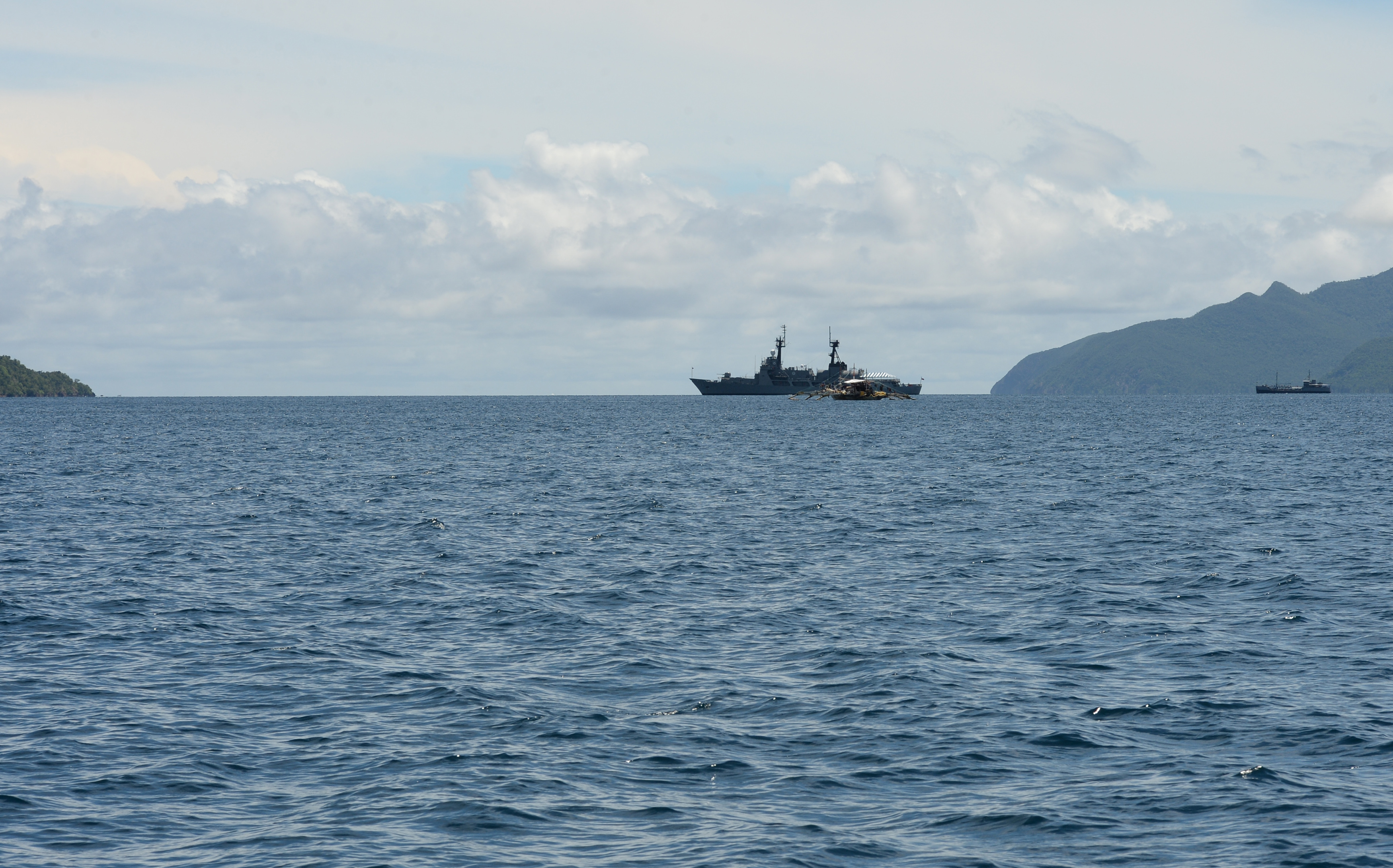
This photo taken on June 7, 2014 shows the Philippine Navy frigate BRP Ramon Alacraz anchored at the mouth of the South China Sea in Ulugan Bay off Puerto Princesa on Palawan island. Ulugan Bay, with a coastline partly concealed by thick mangrove forests, is at the center of the Philippine military’s efforts to shore up the defense of contested South China Sea islands and waters. AFP PHOTO /
MANILA, Philippines (AFP) — A UN-backed tribunal is on Tuesday expected to deliver a verdict on a Philippine challenge to China’s claims to most of the South China Sea.
Spanning three years, two hearings, and nearly 4,000 pages of evidence, the arbitration case at The Hague is complex.
In essence, China claims most of the sea, even waters approaching neighboring countries, based on a vaguely defined “nine-dash” Chinese map dating back to the 1940s. The Philippines disputes this.
Here are the key facts on the case:
What is the tribunal and what are its powers?
The tribunal was set up by the Permanent Court of Arbitration, an intergovernmental organisation established in 1899. The PCA has 121 member states, including the Philippines and China. It is allowed to arbitrate on certain matters of international law, including the United Nations Convention on the Law of the Sea (UNCLOS).
The five-member tribunal hearing this case is composed of top maritime affairs experts, with the Philippines appointing one member. China waived its right to choose one arbitrator.
The tribunal has the power to set the rules of procedure and make a decision that cannot be appealed. However the tribunal and the PCA have no means to enforce the verdict, with compliance left to the parties concerned.
What are Manila’s key points?
The Philippines has presented five main claims before the tribunal:
1. China is not entitled to exercise what it calls “historic rights” over waters beyond limits defined in UNCLOS, a treaty to which both the Philippines and China are parties.
2. China’s “nine-dash line” has no basis under international law.
3. The various maritime features relied upon by China to assert its claims in the South China Sea are not in fact islands and, as such, are not legally capable of generating such entitlements. China’s recent massive artificial island-building does not change the situation.
4. China violated UNCLOS by preventing the Philippines from exercising its fishing and exploration rights.
5. China has irreversibly damaged the environment by destroying coral reefs, using harmful fishing practices, and catching endangered species in the South China Sea.
Why did Manila take the action?
Under previous president Benigno Aquino, the Philippines said it had exhausted all political and diplomatic avenues to settle the dispute following 17 years of negotiations with China.
The Philippines calls international law “the great equalizer” allowing small countries to challenge more powerful states. A nation of about 100 million, the Philippines has one of Asia’s weakest militaries, and its economic and diplomatic clout pales in comparison with China’s.
What is China’s position and how will it react?
China denies the tribunal has jurisdiction on the issue and insists that it will ignore the decision.
President Xi Jinping said China would never compromise on sovereignty and warned it was “not afraid of trouble”. But it is unclear how aggressively China will react.
China could choose to withdraw from UNCLOS, or begin building on Scarborough Shoal, a fishing ground within the Philippines’ exclusive economic zone that it seized control of in 2012.
China could also declare an air defense identification zone over the sea, claiming the right to interrogate aircraft passing through the airspace.
Or it could seek to defuse tensions with the Philippines and enter into direct negotiations.
If the tribunal cannot enforce its ruling and China has vowed to ignore it, what is at stake?
The Philippines hopes a favorable ruling will help to build international pressure on China to make concessions and reverse or stall its expansionist efforts in the sea. For instance, the United States has already called on both sides to respect the ruling.
The Philippines also hopes a favorable ruling will give it much-needed leverage in any negotiations with China. Ultimately the Philippines wants China to sign a code of conduct for the sea.
© 1994-2016 Agence France-Presse







